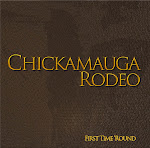Duncum's 7 Principles -
Hybridization?
Layering?
Appropriation?
Art Provides these 7 principles: power, ideology, representation, seduction, gaze, intertextuality, and multimodality. The last two principles are recently added to the new areas being explored in visual images. Along with other well known art principles, intertextuality and multimodality are explored by Paul Duncum.
Due to the present availability of computers and changes in social norms, Duncum points to some innovative organizing principles that are new and necessary in understanding and teaching new Visual Cultural Studies. His references include some of the following regarding visual images: "agency, audience, discourse, globilization, high and low culture, identity, myth, rhetoric, scope, regime, semiotics, and visuality."
Modality, according to Duncum, is that there is no purely visual images; that they never appear without words, music, or other sounds. Multimodality becomes clear in television, movies, in print, and on computer screens. "Words, music and sounds effect anchor the meaning of images." Duncum found that pictures of children with happy, pleasing music in the background were perceived differently by the viewer if the music was a genre which eluded to fear with a threatening tone. Magazines in foreign languages become void of understandable meaning, even with the image present, when the words that facilitated the understanding of the image were absent. In addition, television, when viewed without sound, was vacant in complete understanding.
Intertextuality, according to Wilson, is stated that "All images relate to other cultural texts such as books, poems, music, and of course, other images." "With computers, intertextuality is known as hypertext, where pressing on blue words, and often on pictures, immediately takes the user to a related screen." Students make associations through the access of new and intricate connections.
Duncum integrated low-technology with intertext by encouraging students to group and organize their divisional ideas and the far reaching cultural associations from one multimodal visual much like the show, American Idol.
In our present time, or society is experiencing a virtual avalanche of visual imagery on a global scale. The basic key elements, power, and how it is expressed, ideology or cultural beliefs and values, and manipulations of body posture, gesture, gaze, are all still the absolute formal elements and principles that are and always have been monumental in curriculum for the appreciation of and the understanding of art. Duncum advises that educators need to be more fully equipped to challenge students in understanding images with new tasks in orientation in Multimodality and Intertextuality.







